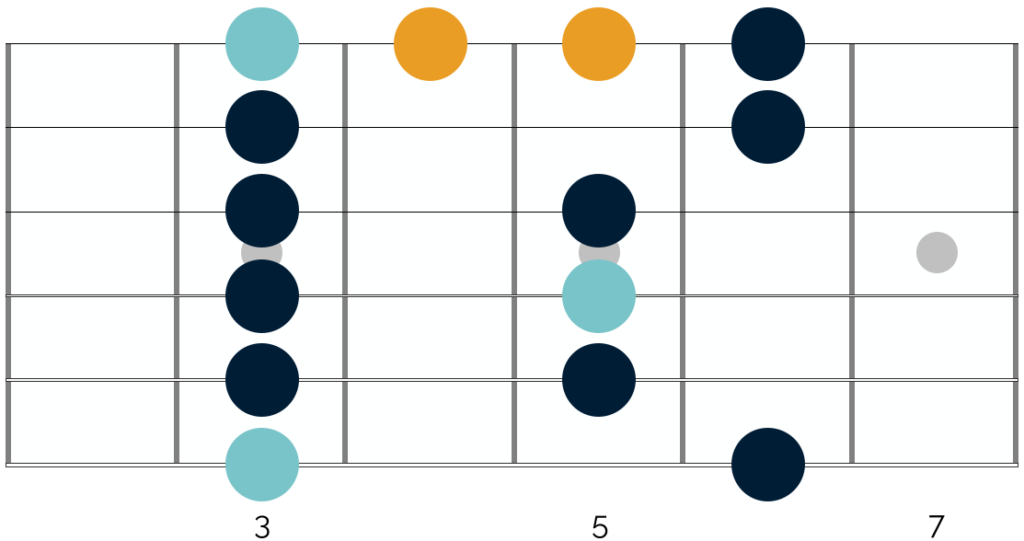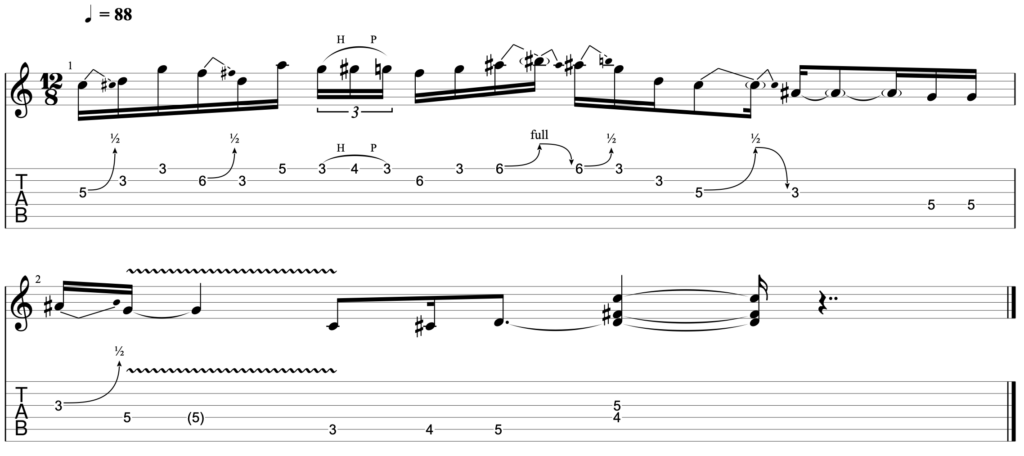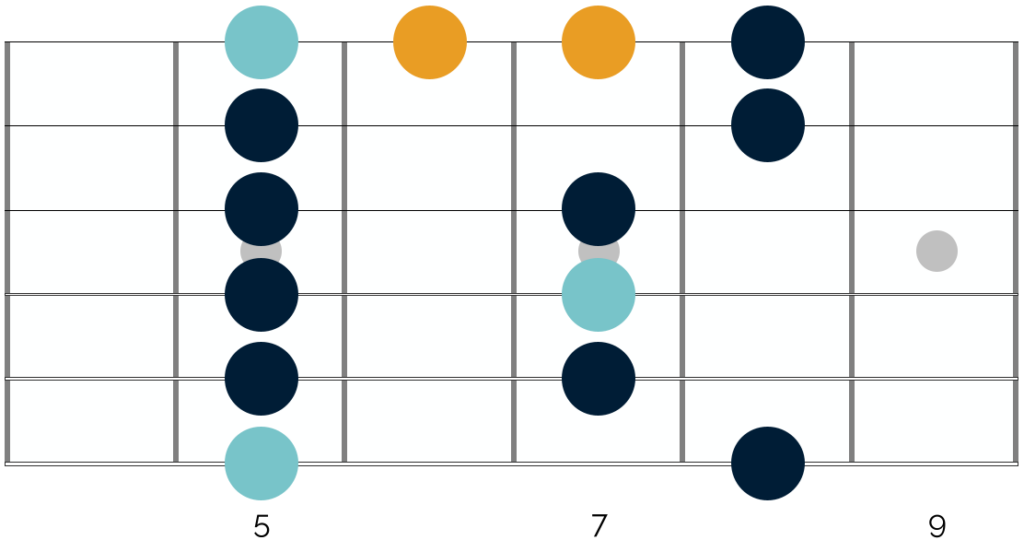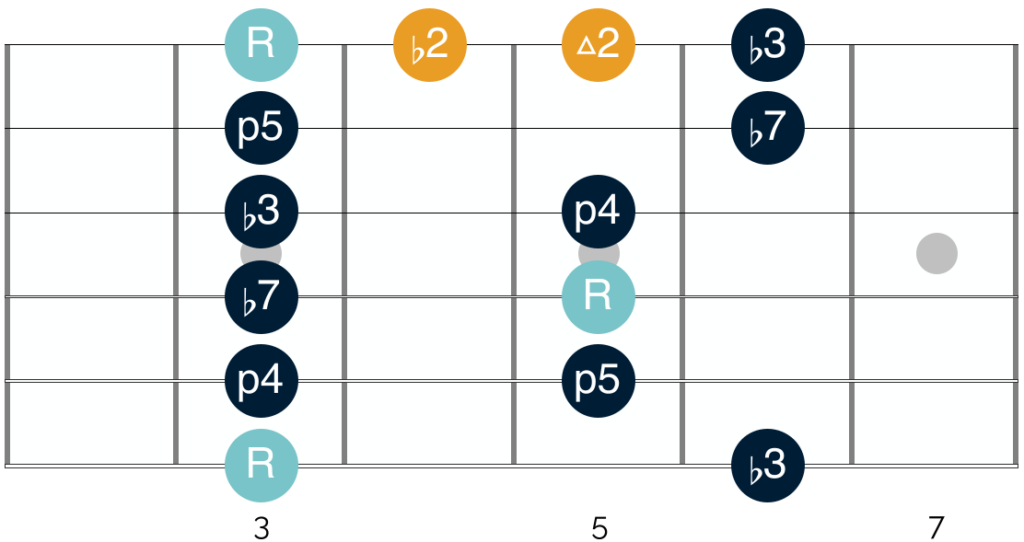When John Mayer stated inducted Stevie Ray Vaughan into the Rock and Roll Hall of Fame in 2015, he said of Vaughan’s playing style:
‘There is an intensity about Stevie’s guitar playing that only he could achieve, still to this day. It’s a rage without anger, it’s devotional, it’s religious. He seamlessly melded the supernatural vibe of Jimi Hendrix, the intensity of Albert King, the best of British, Texas and Chicago Blues and the class and sharp shooter precision of his older brother Jimmie. Stevie is the ultimate guitar hero’
John Mayer
In doing so, Mayer perfectly summarised the core elements of Vaughan’s playing style, and why it is so challenging to emulate Vaughan.
To sound like SRV, you need to play fast, with a high level of intensity and perfect precision and timing. Each of these single elements is challenging. And combining them together requires years of dedicated practice.
The good news, however – is that there are certain techniques that you can add into your playing to ‘tip your hat’ to Vaughan and create a distinct SRV style vibe in your playing.
We covered one of these in last week’s quick win lesson when we looked at ‘bend stacking‘. This was one of Albert King’s signature bending techniques, and one which Vaughan also used to great effect.
In this week’s quick win we will be looking at a similar idea. Specifically, we will look at a single lick that you can use whenever you are playing in the first shape of the minor pentatonic scale.
Not only will this give you more options when soloing, it will also immediately create a Stevie Ray vibe in your playing.
So with that in mind, let’s get into it.
Here is a quick idea that you can target in your playing to sound like SRV:
Phrasing like SRV
The idea covered in this quick win is very specific.
It involves taking a fairly typical movement pattern across the first pentatonic shape, and adding in two additional notes.
The example in the video above is in the key of G.
So if we look at the first shape of the minor pentatonic in the key of G, in addition to the two notes we are adding into the mix, we end up with the following:

The tonic notes of G are highlighted in light blue. And the two new notes that we have added from outside the minor pentatonic scale are highlighted in yellow.
At the 22 second mark, I illustrate how you can target these notes within a phrase when I play the following:

At 120 beats per minute (BPM) this is how it sounds:
In the video I play the lick quite slowly, to help illustrate what is happening in my fretting hand. However this idea is based closely on an almost identical idea that Vaughan plays in the intro solo in Texas Flood.
This is what the idea looks like within a longer phrase:

At the 88 beats per minute (BPM) at which the song is played, this is how this section sounds:
In the original song, Vaughan tunes his guitar down a semitone to E flat (Eb). However for continuity with the previous example I have adjusted the tuning here to be in standard.
As you can hopefully hear in both examples – not only is this idea very effective, it also immediately adds a bit of Stevie Ray magic into your playing.
Changing keys
This idea functions very much as a stock phrase.
If you don’t want to, you don’t need to worry about adapting the lick too much and instead can simply slot it into your solos around your other phrases. In great news, you can do this in any key in which you might be playing.
All you need to do is navigate to the first shape of the minor pentatonic scale in that key, and you can replicate the idea there.
In the key of A for example, the first shape of the minor pentatonic scale and these two additional notes appear as follows:

As you can hopefully see, the shape and note distribution here is exactly the same as in the examples in the key of G.
The only difference is that we have now shifted everything up two frets higher, into the key of A.
You can apply the same idea to any key in which you might be playing. And in this way you can replicate this idea all over the fretboard.
Mixing major and minor
Not only this, but you can use this idea in both a major and a minor blues context. To fully appreciate this requires a little knowledge and discussion of theory.
Don’t worry – we won’t go too deep here. We will however look at the specific intervals that we are adding into the phrase when we target these two notes.
If you don’t know what intervals are, or you don’t yet feel comfortable with them, then I would recommend heading over to the full course ‘An Introduction To Intervals’.
In there I run through intervals in great depth and explain exactly what they are and how they function.
If you do understand intervals and would like to better understand what is happening here, we are now going to look at the intervals present in the minor pentatonic scale, as well as the new notes we are adding into the lick illustrated above.
We will also look at how these intervals impact the structure and sound of this lick.
Let’s return to the earlier diagram in the key of G, now with the intervals highlighted:

The notes in light blue are the tonic notes of G. And in dark blue you can see the other intervals present within the minor pentatonic scale. These are as follows:
1 b3 4 5 b7
Even though it is a minor scale, the minor pentatonic scale functions in both a major and minor blues context.
In a minor blues context, the minor intervals of the scale align with the intervals present in the minor chords over which you are playing.
In a major blues context, you end up with a clash between the major 3rd interval that appears in the major chord, and the minor 3rd interval that appears in the scale.
This should sound harsh and dissonant. But in fact it creates a beautiful tension that we now associate with the blues.
As such, all of the notes within the minor pentatonic scale work in both a major and minor blues context.
Adding (and managing) tension
The two extra notes that Vaughan uses in his phrase also work in both a major and minor context. However you have to approach them with greater caution than the notes of the minor pentatonic.
As noted within a number of courses within The Blues Club, the minor pentatonic scale provides such a great option when you are starting out, because you can treat the notes of the scale fairly indiscriminately.
Of course they are not all equal and they do function differently. However, provided you are playing in the right musical context, it is quite difficult to play a note from the minor pentatonic scale that sounds very harsh or dissonant.
This is not true of the notes that Vaughan adds into this lick. As highlighted in yellow in the diagram above, Vaughan adds in the the b2 and the 2nd, respectively.
The b2 is a minor interval that appears in the Phrygian mode. The 2nd is a major interval but it appears in a wide range of both major and minor modes and scales.
For example, it appears in the major pentatonic scale and the Mixolydian mode, both of which are scales with a major tonality.
However it also appears in the Dorian and Aeolian mode, both of which are scales with a minor tonality.
Although they are separated by just a semitone, these two intervals create a very different feel in your solos. The b2 has an aggressive and tense sound. And in fact it is quite rare to encounter this interval with great frequency in the blues.
Conversely, the 2nd has a warmer and more upbeat sound. This interval appears in the major pentatonic scale and so it is much more common to encounter it in the blues.
It is helpful to understand the quality of these two notes. They dictate how Vaughan structures his phrases. And appreciating this helps you to effectively create variations on Vaughan’s initial idea.
Developing your own phrases
As noted above, you can use this phrase as a set piece that you can slot into your solos whenever you want to add a bit of that SRV magic to your improvisations.
You can do so in both a major and a minor blues context, as well as in a slow or more upbeat context.
If you do want to adapt and build on the phrase, there is only key point to keep in mind. And it is to treat the b2 as ‘passing note’.
As illustrated above, this will help you to add a moment of beautiful and bluesy tension to your playing. If you linger on that note however, this bluesy tension will turn into harsh dissonance.
It is for this reason that Vaughan targets the two extra notes with a fast hammer on and pull off idea. And it is why I do the same in my example lick.
Of course, you can adapt the way in which you target the note. But whether you use slides, bends, pull offs, or hammer ons – just be careful to limit the overall time you spend on the b2 interval. This will ensure your playing sounds bluesy and not dissonant.
To get more mileage from the idea, you can also choose to target just one of these two intervals.
Vaughan does this in the song Lenny, where he just targets the b2. You can see this in the following section of the song:

At the 62 BPM at which the song is played, this is how this bar sounds:
In the track Vaughan is playing in the key of E with his guitar tuned down a semitone to Eb.
Here I have altered the audio to be in standard tuning. And hopefully you can see how Vaughan targets the b2 interval within this bar in the first shape of the E minor pentatonic scale.
This is just one example.
Of course you can do the same with the 2nd interval (as Vaughan often does as well). You can also vary how you target these notes, and the order in which you play them, as well as the ideas that you use before and after the phrase.
In doing so, you can create a huge number of variations from this starting phrase.
As always, how successfully you implement this idea will be determined by your ability to experiment and really dig into this concept.
Think about ways you can adapt and build on the phrase, and how you can target these additional notes in new and different ways.
This will help you to get a huge amount of mileage from the idea and add your own twist onto the phrase.
Closing thoughts
When you are going through this process, my final piece of advice is to be mindful of how much you target this idea in your playing.
This lick works so well because it mixes the minor and major tonalities in a very smooth and effective way. And this adds a beautiful bluesy tension to your playing.
As noted throughout, because of the frequency with which Stevie Ray Vaughan included this idea in his solos, playing this idea will help you create a strong SRV vibe in your improvisations.
This of course is brilliant, and has been a large focus point of this lesson. However it is important to not overuse this phrase in your playing. There are two reasons for this, which are as follows:
Firstly, you run the risk of sounding like you are simply imitating Vaughan, rather than adding an SRV vibe to your playing. It is brilliant to target and use the ideas of your blues guitar heroes.
However you want to do so alongside your own licks and musical voice. Otherwise your playing will sound like it is lacking in originality, and will suffer as a consequence.
Secondly any lick or phrase you use in your playing – no matter how effective – will lose its impact with overuse. This is always a risk when learning new ideas.
You find a new lick that you love, and suddenly you start using it every time you improvise. This will be to the detriment of your improvisations, so be conscious of this when using it in your solos.
Otherwise, good luck trying this out! Let me know how you get on, and if you have any questions, just send them across. You can reach me on your messenger whenever and I am always around and happy to help 😁
